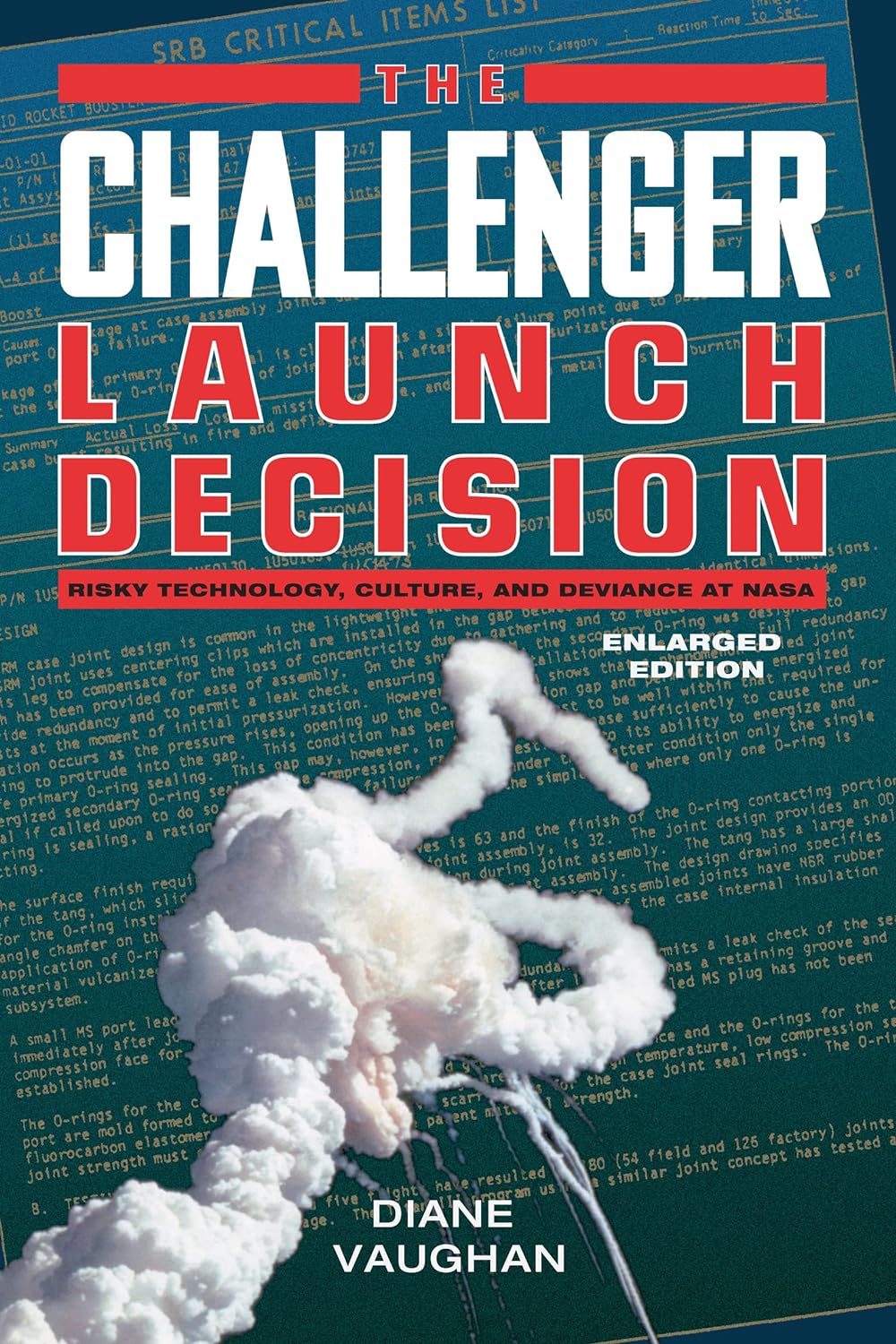The Challenger Launch Decision - Diane Vaughan

This is a fantastically detailed look at the meeting between Morton Thiokol, Nasa Cape Kennedy and the Marshall Spaceflight Center to discuss SRB joint problems on the night before the Challenger launch, and the sociological and ethnographic background. Despite the depth and potentially tedious detail this was actually a very compelling read.
The structure was interesting - presenting the meeting as portrayed in the media after the event and the publication of the Roger’s Commission report; then a massive review of the history and factors that lead up to it; followed by another look at the same events with the benefit of all the additional research.
The message that I take away from this exhaustive study is that (despite the demands to find one) that there was no “smoking gun”. There was no single “error” - the outcome of the meeting was the product of 10 years of history, precedent and the bureaucratic and engineering structure in which it took place. If the meeting came to an apparent “incorrect decision” it was the final deviation in a long chain of incremental decisions to regard unexpected findings as acceptable.
Although I fully understand the findings, I don’t see any easy way that it could have been avoided, as the author pointed out the signals were both weak and mixed and the case to halt the flight (in the view of all the previous weak and mixed signals) was never obvious. As well as no smoking gun there’s no magic bullet.
Indeed, the final chapter, despite being titled “Lessons Learned” actually concerned lessons for the disciplines of sociology and ethnography rather than NASA management or any wider lessons for those in the technology industry. In itself, quite a difficult lesson to digest.
Perhaps the most interesting finding was in the area of communications and data science. During the meeting the relationship between ambient temperature and joint problems was shown in a scatter diagram but had no clear pattern. And this, in hindsight, is because there were several different causes for O-ring issues - contaminants in the groove, poorly applied putty, test procedure changes and, yes, lack of elasticity caused by low temperature (but masked by the other causes). Some investigators from the Senate Commission created a different chart, by adding the data for all the flights that did not any O-ring issues. With that data added the relationship is much clearer - almost every problem-free flight was undertaken with a high ambient temperature. It is interesting, but ultimately unknowable whether this more complete chart would have provided more compelling evidence and strengthened the case for delay.
In short a tremendously impressive work of scholarship but unsatisfactory as it is so hard to take away any truly useful message.
